Historic papers 3 - Alpher, Bethe and Gamow Phys. Rev. (1948)
“Historic Papers” is a series of posts, in which we explore famous scientific papers that were the stepping stones for the advent of nuclear astrophysics, and we also learn about the life of the scientists involved.
For this week’s historic paper, we will take on a landmark in the history of nuclear astrophysics titled “The origin of chemical elements” by Ralph Alpher, Hans Bethe and George Gamow, published at the Physical Review in 1948.

One of Gamow’s brilliant ideas was that all chemical elements were created in the early, hot relativistically expanding universe. He suggested that Alpher, his Ph.D. student working in cosmology at the time, work on the calculations to test his hypothesis. Alpher came up with a system of equations that describe this synthesis process:
\[\frac{dn_i}{dt} = f(t) (\sigma_{i-1} n_{i-1}- \sigma_i n_i),~ i=1,2, \cdots ,238\]where \(n_i\) and \(\sigma_i\) are the number densities (number of atoms per volume unit) and the cross sections (probability of a reaction to happen) for nuclei with weight \(i\). If one integrates the system of equations, the result shows a decreasing production abundance as the atomic weight increases, consistent with the observed abundances in the solar system (see left figure below). Another amazing result of the paper was the estimate that this nucleosynthesis process started around 20 seconds after the “Big Bang” and not immediately after it. This was derived by assuming that the calculated line in the figure below corresponds to an integral of \(\rho dt= 5 \times 10^4~ g~sec/cm^3\).
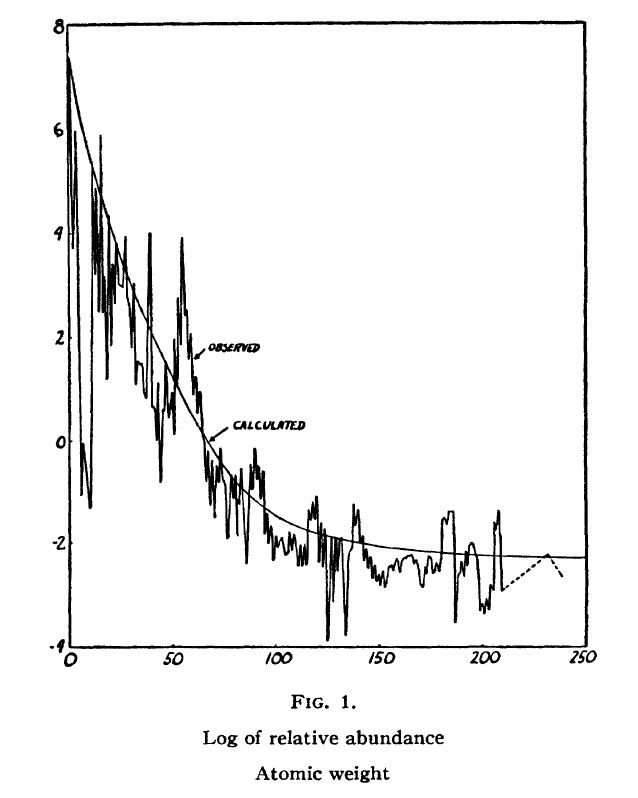
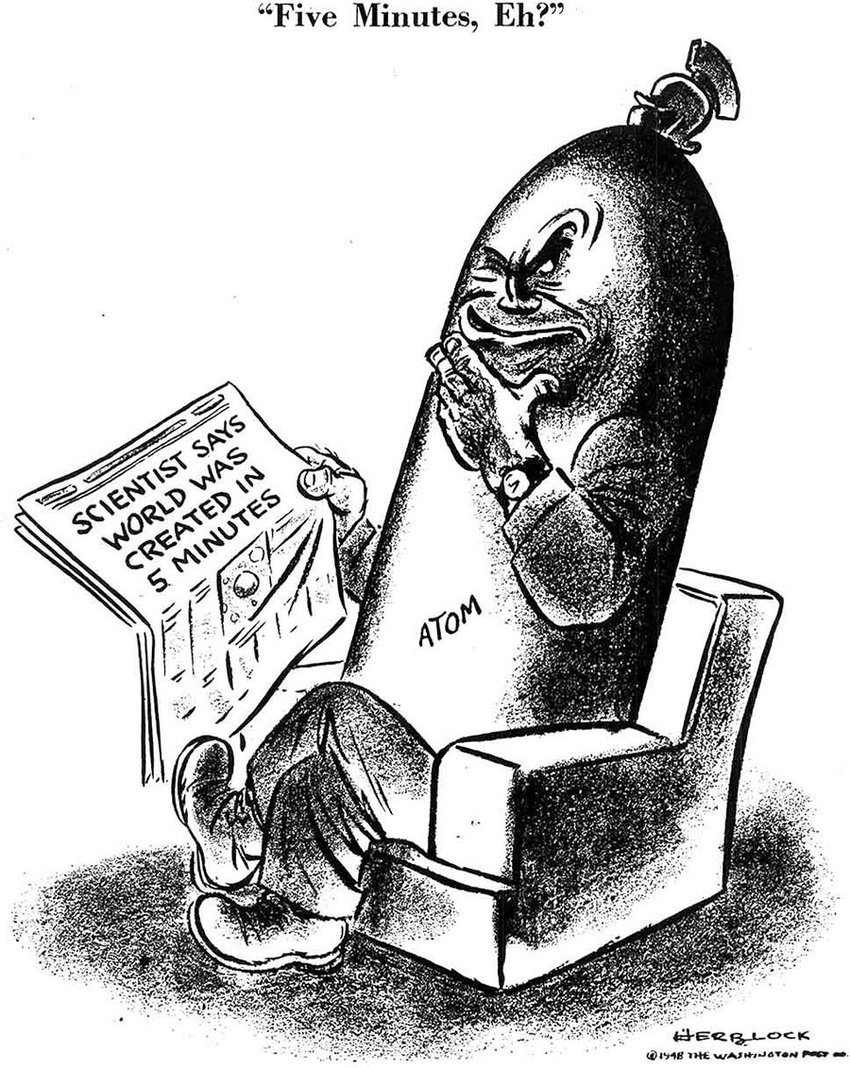
Gamow was known for his playful character and he wanted the paper to be known as the “αβγ” paper, from the first letter of the authors or the “alphabetical article”. For this reason, he invited Hans Bethe to be included as an author in the article, without contributing to the work. Alpher was against that, but Bethe reluctantly agreed and then he was also joined Alpher’s dissertation examining committee. To add more in the Gamowian, playful style of the paper, it was published on April fool’s day (sent in February 18th)! Alpher’s Ph.D. defense was shortly after the publication of this work and it tracked a lot of attention, due to its groundbreaking results. It was attended by 300 people, an astonishingly large number for a Ph.D. defense.
The most important prediction of the Big Bang theory (the term was famously credited to Fred Hoyle, who rejected the theory and supported the steady state universe - homogenous in space and time - instead) was the relic radiation, called the Cosmic Microwave Background (CMB), which was confirmed by Penzias and Wilson at Bell Labs in 1964.
According to our current understanding of the origin of the elements, the Big Bang can only synthesize hydrogen, helium and a small amount of lithium. There is no stable isotope with a mass of 8, and it was later shown by Eddington, Bethe, Hoyle and Cameron that the stars are the element factories of the universe.
Meet the Scientists
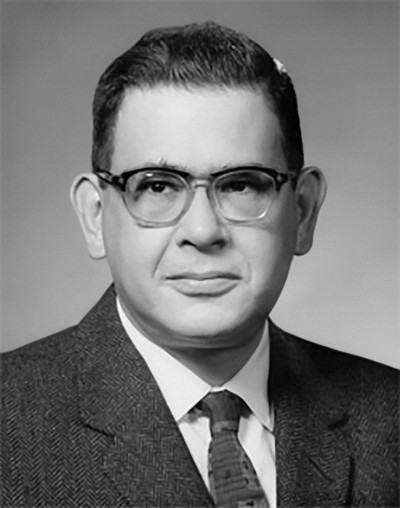
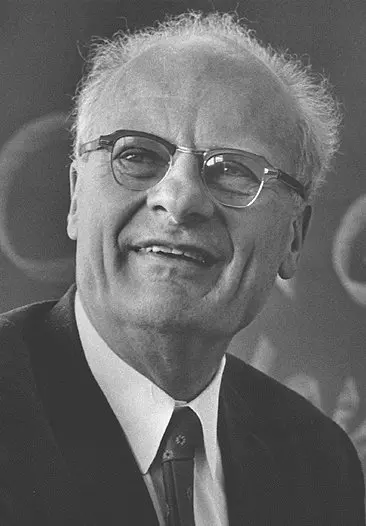
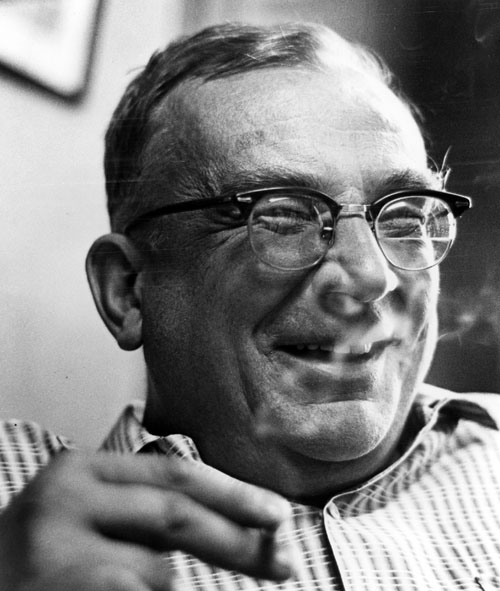
Ralph Alpher
Alpher was born in 1921 and studied physics at George Washington University. His Ph.D. thesis was the origin of the chemical elements during the Big Bang under George Gamow, which he decided to work with after taking a relativity course with him. Unfortunately, even though he performed all the calculations for the “The origin of chemical elements”, Gamow kept being credited for it. Alpher left cosmology and joined General Electric’s R&D centre in Schenectady in New York in 1955. He later moved to Union College in 1986, where he was emeritus professor. In 2005, couple of weeks before his death, he was awarded the US National Medal for Science for “his unprecedented work in the areas of nucleosynthesis, for the prediction that the universe expansion leaves behind background radiation, and for providing the model for the Big Bang theory”.
There are two reasons you do science. One is the altruistic feeling that maybe you can contribute to mankind’s store of knowledge about the world. The other and more personal thing is you want the approbation of your peers. Pure and simple.
-R. Alpher
Hans Bethe
Even though he did not contribute to this paper, Hans Bethe was one of the greatest physicist of the 20th century and helped establish the foundations of nuclear astrophysics. He grew up in Germany and worked for his Ph.D. on crystallography in Munich under Arnold Sommerfeld. After Hitler’s ascension to power in 1933, he moved first to England and then to the United States, where he got a position at Cornell university. His research interests start moving towards nuclear physics and its application to stars. He famously worked out the equations (reaction network) for the carbon-nitrogen-oxygen (CNO) cycle in a couple of weeks after a conference in George Washington University (invited by Gamow). For this work he was awarded the Nobel Prize in 1967. Bethe worked on the development of the first atomic bomb in Los Alamos, as the head of the theoretical division, and the hydrogen bomb, but years later argued against nuclear weapons. He died in 2005 at the age of 98.
Below you can watch a short clip from an interview of Bethe, in which he was asked again about this paper and he goes straight to what is known today about nucleosynthesis.
George Gamow
Gamow is one of my science heroes. He was born in Odessa and studied physics and mathematics in his hometown and at the University of Leningrad (St. Petersburg). His interest in the newly found quantum theory led him to the main hubs in Europe, Göttingen, Copenhagen and Cambridge. In 1928 Gamow developed the theory for the alpha-decay of a nucleus via tunneling. Few years later, he moved to the United States and became professor at George Washington University. His research interests shifted from nuclear physics to astrophysics and cosmology and he also provided useful insights on solving the DNA problem. In the late 1950s he moved to University of Colorado Boulder. Gamow was a avid science communicator and in 1956 he was awarded the Kalinga Prize by UNESCO for his work in popularizing science. Some of his most well known books are “One, two, three … infinity” and his Mr. Tompkins series.